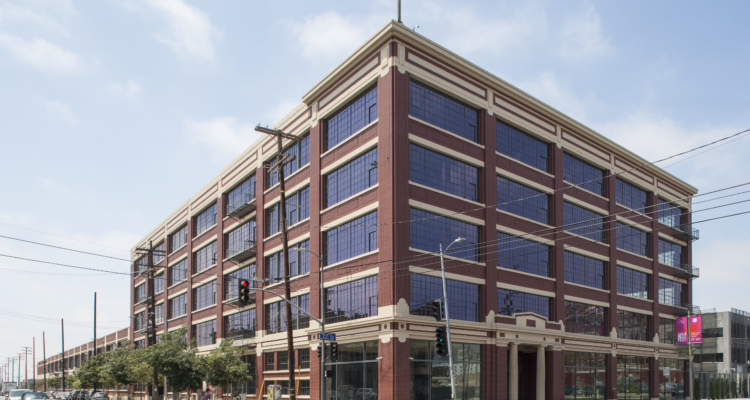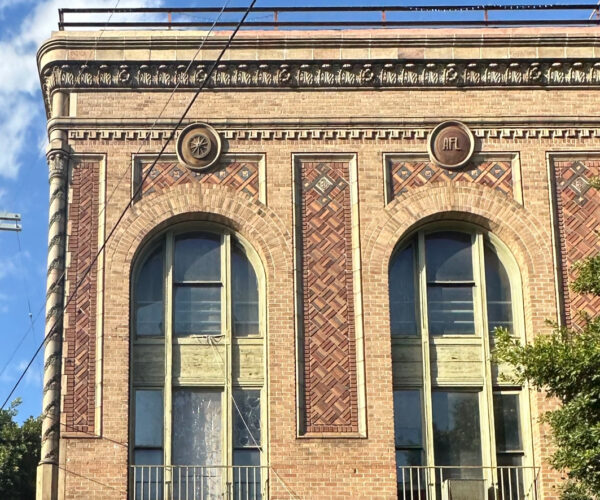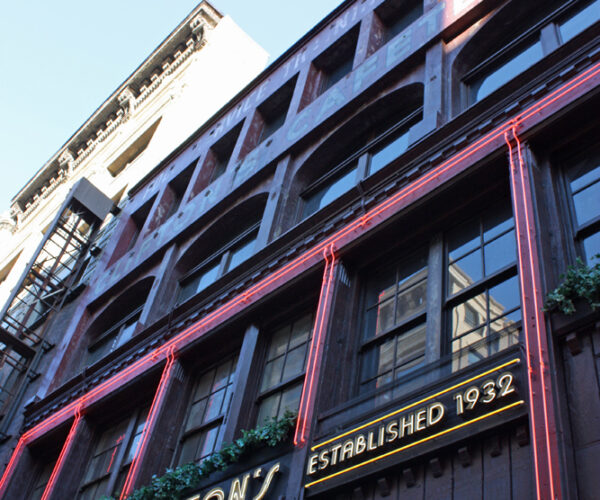
Place
Warner Music Group Headquarters
This remarkable adaptive reuse project restored the historic integrity of a former Ford Model T showroom and factory, and turned it into an inspiring creative office and retail space.


Place Details
Address
Get directions
Architects
Year
Style
Decade
Designation
Property Type
Community
Built in 1913, Warner Music Group Headquarters was the first Ford Motor Company assembly plant in Los Angeles and Southern California. Located in what is now called the Arts District, the building was one of six identical Beaux Arts style factories designed by John Parkinson and George Bergstrom. The five-story “fireproof” steel-and-concrete tower was built to facilitate Henry Ford’s innovative vertical mass production technique.
Ten years later, Parkinson & Bergstrom’s successor firm Parkinson & Parkinson designed a two-story “daylight factory” to accommodate both assembly and manufacturing. Ford moved all its production outside Los Angeles by 1942.
Over the next seventy years, through changes in ownership and tenant use, the plant saw new additions, alterations, a deadly explosion, and an ill-conceived renovation. The historic facility was in an advanced state of disrepair when, in 2014, new owners brought on Rockefeller Kempel Architects to lead a $50 million renovation.
The team set forth boldly to reimagine the deteriorated Beaux Arts style factory as new creative office and retail space for tenant Warner Music Group. The outdated, rundown buildings were out of code, lacked security, had minimal parking, and no nearby amenities. The exterior walls had been altered to protect the building from theft, graffiti, and vandals. Windows and ground-floor doors had been plastered with stucco; some doors replaced with metal roll-up doors.
Under the California Environmental Quality Act, the ambitious project restored, renovated, and modernized the 280,000-square-foot historic industrial complex, adaptively reusing it as a creative office space accompanied by a new green Paseo—all while preserving it its architectural character.
The project team restored the building’s original brick façade, revealing the building’s original Beaux Arts design, and worked closely with historic architects and restoration experts to recreate some of the decaying and destroyed elements of the exterior.
Windows found entombed in the walls were repurposed alongside identical replicas. The team replaced over 18,000 individual windowpanes on the skylights and windows with energy-efficient glass. Through creative architectural solutions and historical restorations, the building achieved LEED Gold certification by the U.S. Green Building Council.
Because of the building’s weight, massive shear walls and steel braced frames were used to seismically retrofit, the aging building. All new electrical, mechanical, and plumbing systems, as well as new elevators, fire systems, and new roof were installed.
As a nod to the ground floor’s original purpose as a Model T showroom, a two-tier, 250-seat flexible live performance space as a showcase for current tenant Warner Music Group’s recording artists. A two-story co-working space was created on the ground and mezzanine level. Offices were designed as seven mini-communities within the building.
Today, the Ford Factory is an excellent commercial adaptive reuse that restores lost historic integrity while inspiring new creative work. The Conservancy recognized the extraordinary project with a Preservation Award in 2020.
2020/2021 Celebration Video
The L.A. Conservancy celebrated the 2020/2021 Preservation Awards winners at the historic Los Angeles Memorial Coliseum with a video showcasing their stories. The program celebrated their hard work, dedication, and achievement. We’re thrilled to share Warner Music Group Headquarters inspiring story with you.


